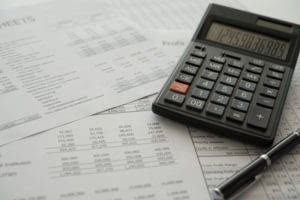
If a manufacturer leases its manufacturing plant and equipment, the lease is a product cost (as opposed to a period cost). That is, rent is included in the manufacturing overhead assigned to the goods produced. Period cost refers to the passage of time incurred by the businesses even if there is no production of goods or inventory purchase. Therefore, a period cost is generally recorded in the books of accounts with inventory assets.

How do I allocate period costs across different departments?
- The period costs could not be capitalized since they are not directly tied to the manufacture of inventory and are thus charged in the company’s profit and loss statement.
- For example, electricity powering machines, factory rent, and salaries for staff who don’t directly work on production are all considered overhead costs.
- In some cases, period costs may vary depending on business activity, but they are generally more fixed than product costs.
- This allocation ensures that overhead is fairly distributed among products, giving you a more accurate picture of total manufacturing costs.
- For instance, in a service business, direct costs might include labor costs, whereas manufacturing industries focus on materials and overhead.
- The best financial analysts and cost accountants don’t just plug in numbers — they connect these formulas to stories.
- Yes, period costs are typically considered fixed costs because they do not vary directly with production levels.
Understanding the distinction between period costs and product costs is vital for effective cost management, financial reporting, and strategic decision-making. While product costs focus on expenses tied directly to production, period costs encompass all other expenses incurred during an accounting period. Businesses must classify and calculate these costs accurately to ensure compliance, maintain profitability, and support operational efficiency. To calculate total manufacturing costs, you need to add up three key components – direct materials, direct labor, and overhead costs. First, identify the cost of direct materials, which includes all raw materials used in production.

Period Costs Example
Rather than being a transactional event, this cost is more closely linked with time. Since this cost is mostly charged as an expense all at once, it is appropriate to HOA Accounting term it a period expense. Yes, period costs are typically considered fixed costs because they do not vary directly with production levels.
- Finally, multiply the total number of direct labor hours by the labor rate per hour.
- Fixed costs are costs that remain constant throughout a specific period of time, regardless of output level.
- Next, calculate direct labor costs, which are the wages paid to workers directly involved in manufacturing.
- Expenses deemed period costs are determined by management accountants and added directly to the income statement.
- Direct allocation provides a simple and transparent way to assign costs to cost objects, making it easier to trace expenses and calculate the true cost of producing goods or services.
A summary of the concept of product cost and period cost
Under absorption costing, companies treat all manufacturing costs, including both fixed and variable manufacturing costs, as product costs. Remember, total variable costs change proportionately with changes in total activity, while fixed costs do not change as activity levels change. These variable manufacturing costs are usually made up of direct materials, variable manufacturing overhead, and direct labor. The product costs (or cost of goods sold) would include direct https://xstation.upgradelabs.pt/2024/09/20/understanding-salvage-value-a-key-component-in/ materials, direct labor and overhead.
Grow Your Business With TranZact.
Next, calculate direct labor costs, which are the wages paid to workers directly involved in manufacturing. Finally, allocate overhead, which period cost formula includes expenses like utilities, equipment maintenance, and factory rent. Total manufacturing cost includes three key components – direct materials, direct labor, and manufacturing overhead. Understanding these components helps businesses calculate total manufacturing costs accurately. Once all individual period costs are identified, the next step is to sum them. This involves adding up all the selling expenses, administrative expenses, and any other general operating expenses that are not tied to manufacturing.
Terms Similar to Period Costs

Forinstance, if you are in month 4 of a project, you would calculate thepoint-in-time cost variance of that period by using the actual cost (AC) andearned value (EV) of the 4th month only. You probably came across the cost variance (CV) when you had been reading about earned value management and variance analysis. Whether you are controlling the cost of your project or preparing for the PMP exam – being familiar with the CV is essential to master project cost management. This means 66.67% of each dollar earned goes toward covering fixed costs and profit. In this guide, we’ll walk through the essential cost accounting formulas — from foundational calculations to advanced applications — with real-world examples that bring them to life. Cost classification is common within managerial accounting to help produce better reports.

How to Calculate Period Costs

Enhance your proficiency in Excel and automation tools to streamline financial planning processes. Learn through real-world case studies and gain insights into the role of FP&A in mergers, acquisitions, and investment strategies. Upon completion, earn a prestigious certificate to bolster your resume and career prospects.
